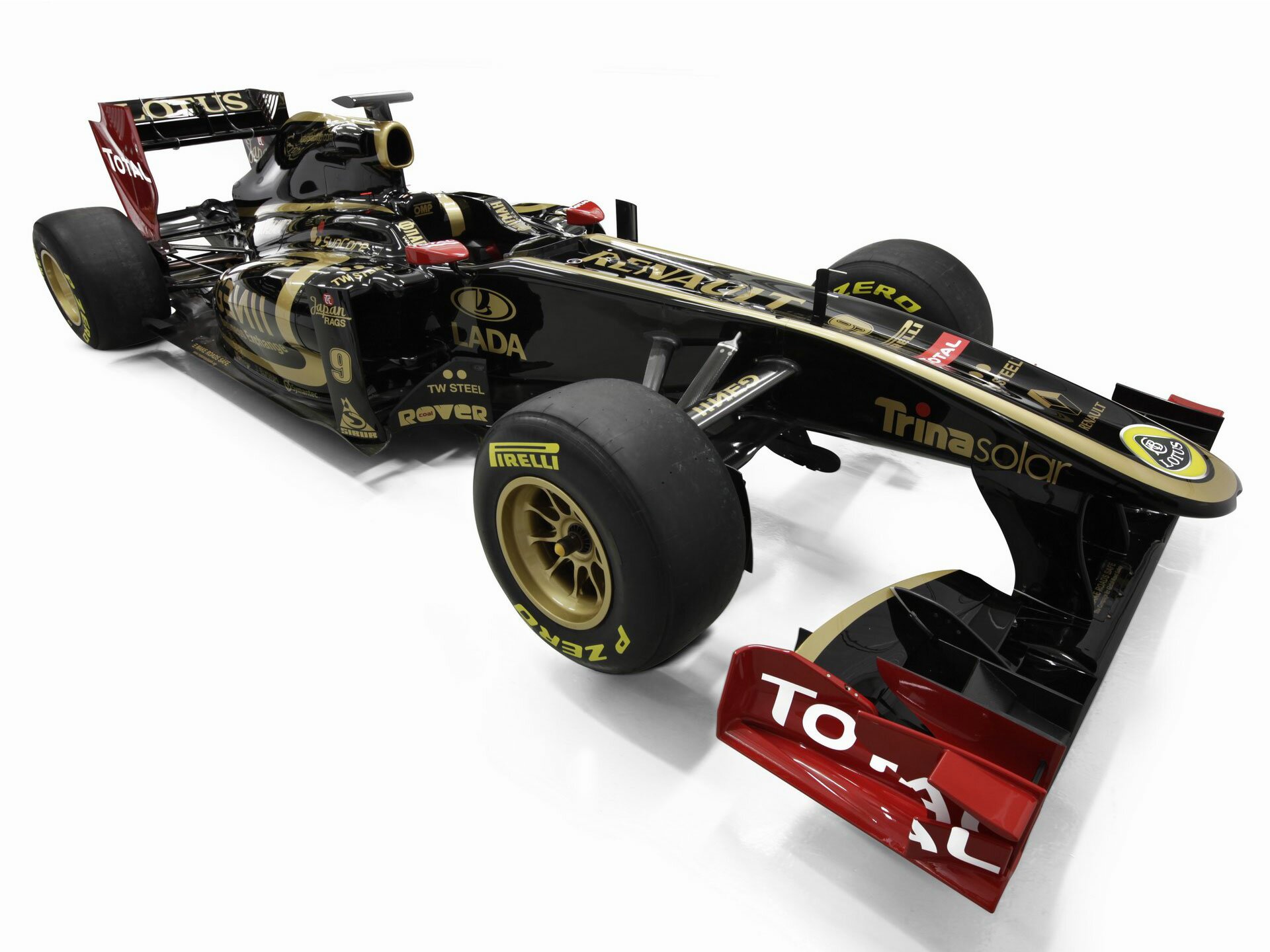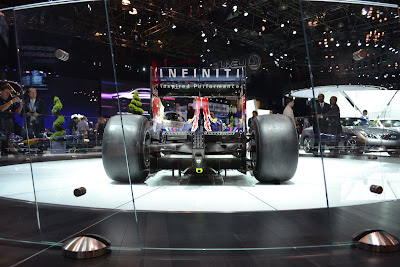In a totally and completely unexpected turn of events, the F1 has decided that it will soon ban the most innovative break through in F1 technology. Wait a second. This isn't unexpected at all! This is the status quo considering the "double diffuser" and "F-duct" were banned after only a single season of use. Keep reading to see what I'm on about.
At the beginning of the season, this car, Renault's R31, appeared in full view of the public bearing nothing that resembled a conventional exhaust outlet. The general public as well as the international media were more than just a little baffled by this. In testing, the truth became very clear that Renault had an ace up its sleeve with a forward facing exhaust that is mounted just below the sidepod opening. Look closely and the split pipe arrangement can be seen above the R in Rover.
Conventional wisdom would say that this makes no sense. Expelling hot exhaust gas in front of an opening reserved for cooling electronics and radiators is a stupid idea. In addition, Formula 1 cars laugh in the face of conventional wisdom and Newtonian physics.
Seriously though, the front facing exhausts make a lot of sense. By introducing hot exhaust gas in front of the diffuser the flow is accelerated more than by just having a diffuser by itself. As the flow and velocity increase, so does the amount of downforce on the chassis.
The concept of using exhaust gasses as an integral part in the aerodynamics of an F1 car is not a new concept. It was used in the 80s and made a comeback with the banned "double diffusers" of 2009 and the single "blown diffuser" introduced in 2010 on the Red Bulls of Mark Webber and Sebastian Vettel.
The key difference is the location of where the exhaust gasses are introduced. By having front facing exhausts, all the exhaust gasses are introduced to the front of the diffuser and used to accelerate air flow and downforce. By applying the exhaust gasses over the top of the diffuser element like on the RB6 in 2010, the flow of air through the diffuser is simply aided by the exhaust flow and is not as efficient.
Critically, in 2010 all the top tier teams saw how effective the blown diffuser was and copied the concept from Red Bull for their own cars. This would make people wonder why the teams, especially struggling Ferrari, wouldn't copy this year's Renault design. The most obvious reason is that, while Renault is faster than expected, they are not constantly on the top step of the podium like Red Bull was last year. Additionally, rerouting an exhaust system down a few inches and heat shielding components isn't the hardest task whereas redesigning a whole car to work around forward facing exhaust requires more than a couple weeks in between grand prix weekends.
So, what's the big deal? Recently, Colin Kolles, boss of HRT, has brought to the attention of FIA technical delegate Charlie Whiting and FIA President Jean Todt the issue of both of these components being illegal as they are adjustable pieces of aerodynamics. Taken very lightly the aerodynamic component in question would be the rear diffuser, which doesn't move at all. The argument that is being made by the underfunded and underachieving Kolles is that the exhaust is a by-product of the motor that has moving parts like pistons, valves, etc. Controlling that motor and how it expels its exhaust is the driver's right foot. This is his long-winded way of saying the adjustable aerodynamics are driver controlled and therefore should be banned from competition.
Really, this all seems like a case of sour grapes. HRT is the lowest on the F1 totem pole in both championship standings as well as financial backing. They failed to qualify for the Australian GP because they couldn't run a competitive lap time within the 107% rule. Without a competitive car or driver to start with and lacking funds to develop their own blown diffuser like every other team, the logical step is to whine about the rules and make everyone take a step back as opposed to progressing their own program.
Lucky for HRT, Formula 1 is looking to push a green initiative and blown aerodynamic elements need a bit more fuel than a "normal" car. While blowing hot exhaust gasses over the elements creates additional downforce, the flow of gasses is not a constant. As stated before, the amount of gas exiting the pipe varies with the application of throttle. Considering that throttle application does not correlate favorably to the ability to turn, engineers needed to find a way to have a constant flow of exhaust gas even when the driver is off the throttle. For them it was just a matter of programming the ECU. This extra fuel that is still being burned throughout each turn equates to about a 10% increase over race distance according to Renault. Considering the size of the fuel tank is already mandated by the FIA, what's the problem? Being innovative and developing a more efficient motor in order to save fuel to use for the diffuser doesn't seem like an issue. Even with a ban on blown elements, the teams will push the balance between power and fuel efficiency to finish a race with nothing left in the tank.
Regardless, the FIA had already decided to ban the aerodynamic aids prior to this past week's Spanish GP. The problem arose when no course of action could be settled upon and the ban was subsequently postponed. After all this blows over, it's guaranteed every team's lap times will be negatively affected. Some say the loss of downforce will account for a half second per lap. Though, this isn't a huge set back. Somebody will push the envelope a bit further next year and gain back that half second and then some. After all, Formula 1 cars do laugh in the face of conventional wisdom
Tuesday, May 24, 2011
Full of Hot Air
Posted by
Danny Chin
at
Tuesday, May 24, 2011

 Labels:
aerodynamics,
Chin,
diffuser,
exhaust,
F1,
hrt,
Red Bull,
Renault
Labels:
aerodynamics,
Chin,
diffuser,
exhaust,
F1,
hrt,
Red Bull,
Renault
Subscribe to:
Post Comments (Atom)



No comments:
Post a Comment